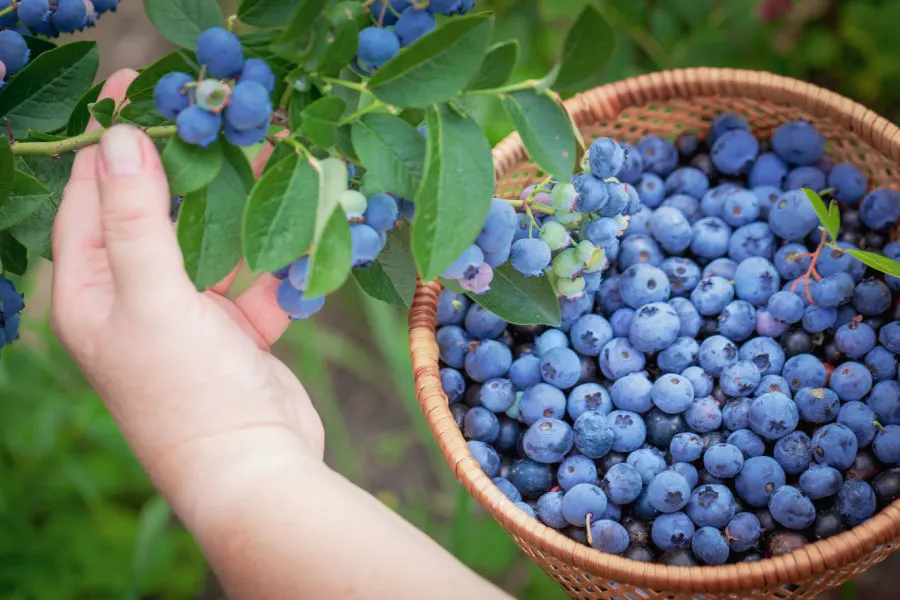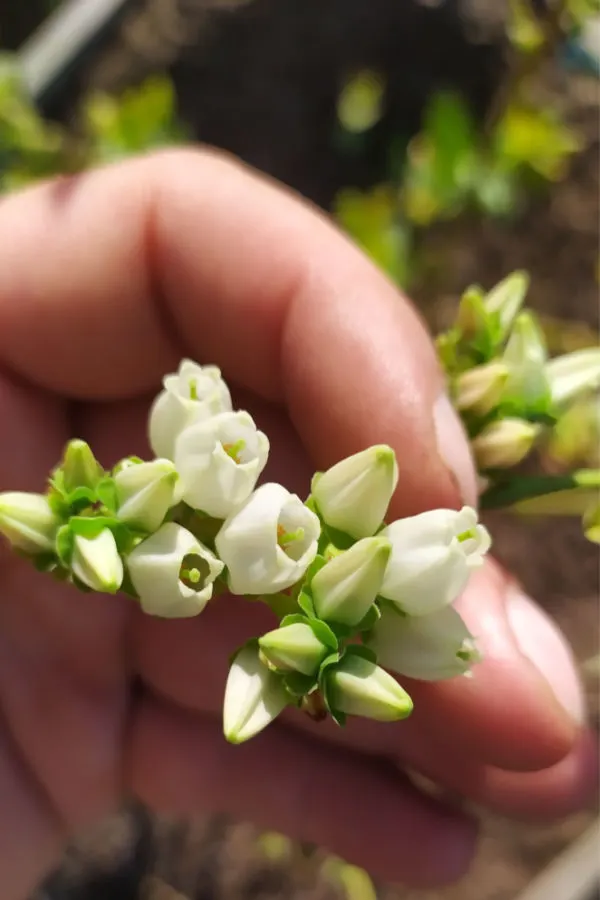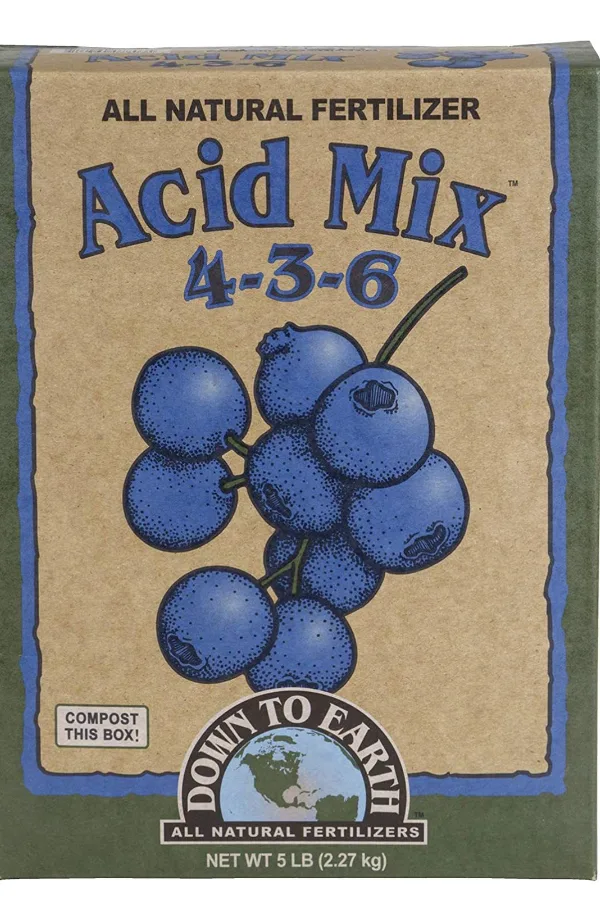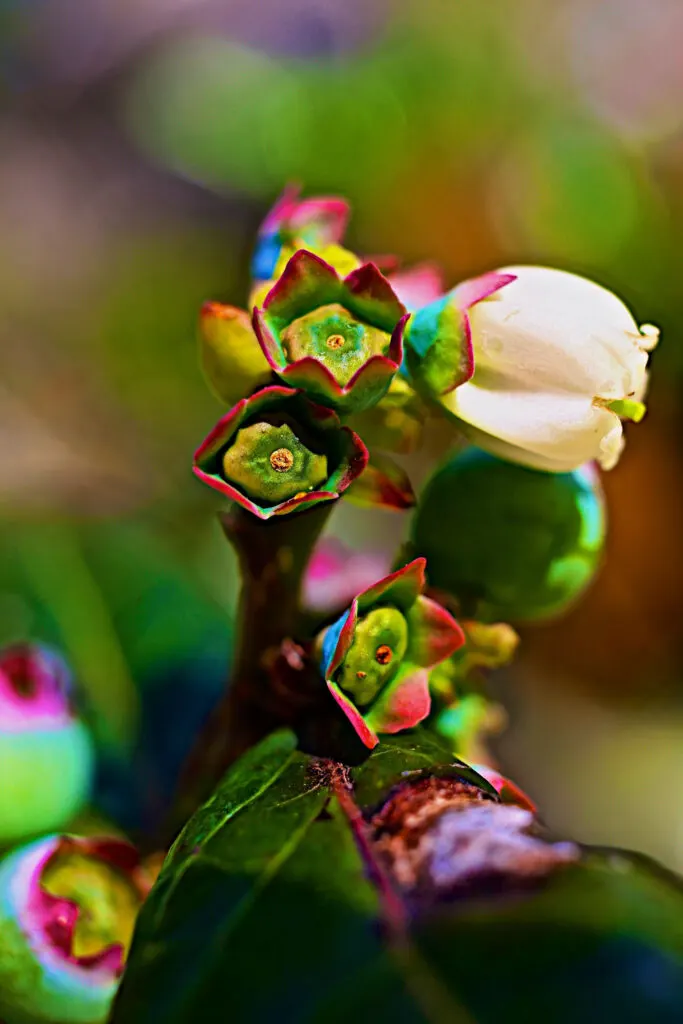Looking for the best way to fertilize your blueberry bushes for healthier plants and a bigger harvest?
One of the best ways to ensure a great harvest of delicious blueberries is to give them the power they need for strong root development, thick foliage and loads of bud production. But when you give your bushes that fertilizer, and what you use for powering them can really make a huge difference in just how successful your crop can be.
When blueberry bushes struggle to produce or even survive, the issue is usually because of one of three major issues – the bushes not getting enough light, the soil not having the proper pH – or – and this is often the biggest issue of all, the plant failing to get enough nutrients.

Giving Blueberries What They Need – How To Best Fertilize Blueberry Bushes
Blueberries certainly need sunlight to grow and produce. And lots of it! In fact, for maximum yields, blueberry bushes need at least 6 full hours of sun each day. In addition, they also require a soil that leans to the acidic side. As an acid loving plant, blueberries need a soil with a pH somewhere between 4.4 and 4.8.
Sunlight, of course, is easy to provide simply by planting you bushes where they will receive the necessary light. And if your soil’s pH is off, it too can be corrected fairly quickly by adding a soil acidifier.
But when it comes to the nutrients your blueberries need to thrive and produce – it’s extremely important to feed your bushes not only the right kind of energy, but to give it to them at the right time as well. With that in mind, here is a look at how to power up your blueberries for success this year!
How & When To Best Fertilize Blueberry Bushes
What Blueberries Need For Power
Like nearly all plants, blueberries require the BIG 3 of nutrients – nitrogen, potassium and phosphorous (NPK) for good growth. And, for good fruit production, those three major energy sources need to be fairly balanced.

But, and this is important, the nitrogen source needs to be different from the one most standard fertilizers provide. Unfortunately, one of the biggest mistakes made when fertilizing blueberries is giving the bushes the wrong type of nitrogen. It is vital not to use standard nitrate based fertilizers.
Although this is the most common type of fertilizer and works well for vegetable plants, annual flowers and most perennials, it is not a good choice for blueberry bushes. Nitrate is actually toxic to blueberries and can cause harm to the bush instead of powering it.
So what type of fertilizer do you need? For best results, blueberry bushes require an ammonium/sulfur form of nitrogen for energy. And that is why when selecting a fertilizer for blueberries, you always want to pick one formulated for acid loving plants. Why? Because it will contain the right type of nitrogen.
Look for granular acid plant loving fertilizers with an N-P-K in the range of 4-3-4 to 4-3-6. These often list that they are specifically for blueberries, azaleas, rhododendrons and other acid loving plants. This balanced energy source will help maintain good growing habits and better fruiting. Affiliate Fertilizer Link: Down To Earth Granular Acid Plant Fertilizer

When To Fertilize – How To Best Fertilize Blueberry Bushes
Unlike many perennial plants, blueberries actually benefit from fertilizing multiple times during the year. In fact, for maximum yields, it is best to give them a dose of fertilizer at three specific but separate times. The good news is you can use the same acid loving granular fertilizer for all three applications.
The first dose of fertilizer for blueberries needs to go on early in the season. This application needs to go on right before or as the bushes are beginning to leaf out. This helps the bush produce strong foliage and allows it to store up more energy for flower production.
There is no doubt about it, strong early growth is vital in setting the stage for strong blooming. This early dose of power sets the stage for everything to come.
The second application of granular fertilizer should be four to six weeks after the initial dose. This burst of energy to the bush is critical in helping it replenish all of the nutrients it has used to prepare for fruiting. Powering the bush at this point will help spur higher production and maximum yields.

The third and final boost of fertilizer needs to go to your bushes just after they complete production. At this point, the bush needs the extra nourishment to replace all of the energy it used for fruiting. This application is vital, and is usually the one that is most often missed.
The Third & Final Application – How To Best Fertilize Blueberry Bushes
Although the third dose will not help produce more berries, it does allow the bush to recover and begin to store energy for the following season. Without it, the following year’s production levels will not be as fruitful.
One time you do not want to fertilize your blueberry bushes is in late fall. This can cause the bush to grow tender new foliage, which can be highly susceptible to winter damage. In addition, do not mulch or side dress blueberry bushes with compost. Again, like traditional nitrate fertilizers, it will give the wrong type of nutrients to your bushes.
How To Apply Granular Fertilizer – How To Best Fertilize Blueberry Bushes
When applying granular fertilizer to blueberry bushes, it is best to slightly rake the surface after sprinkling the granules. This helps the small granules to filter down into the top layer of soil where they can more quickly release their nutrients to the roots below. If you really want to speed the process up, watering in the soil & mulch after raking the granules will really do the trick.

One final note – when mulching blueberries, you can give them a little extra boost of acid by mulching with green pine needles. Fresh pine needles release acid as they brown off. They are an excellent organic way to give even more power to your blueberries! See: How & Where To Use Pine Needles
Here is to powering up your blueberry bushes this year – and to growing your biggest harvest ever!
Follow Our Facebook Page For Great Gardening Tips And Advice! This Is My Garden Facebook Page
This Is My Garden is a garden website created by gardeners, for gardeners. Jim and Mary Competti have been writing gardening, DIY and recipe articles and books and speaking for over 15 years from their 46 acre Ohio farm. They publish three articles every week, 52 weeks a year. Sign up today to follow via email, or follow along!
